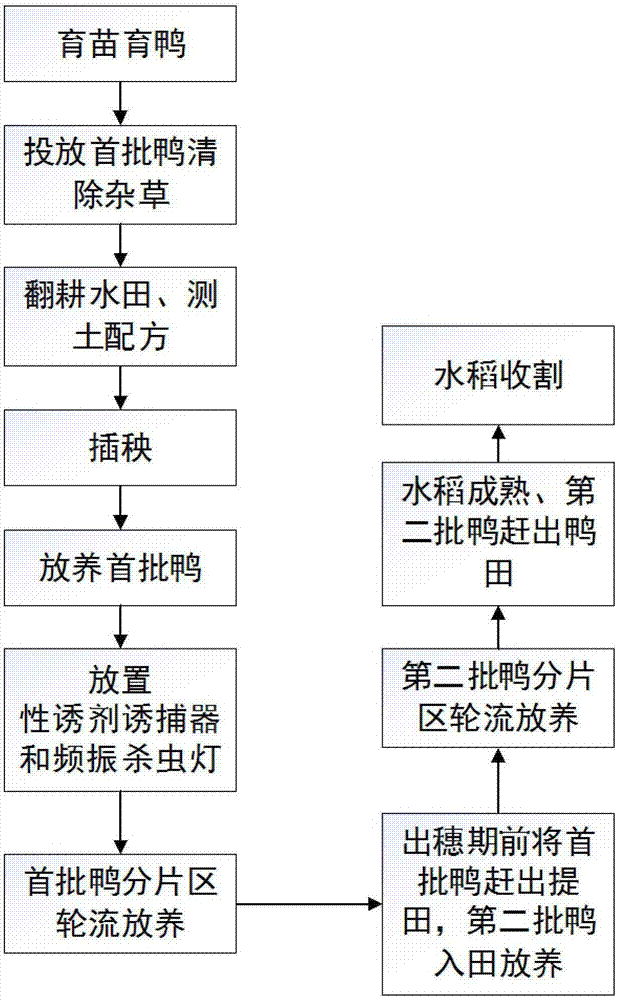Novel duck-rice integrated farming method
A duck-rice co-cropping and production method technology, which is applied in the fields of botanical equipment and methods, rice cultivation, organic fertilizers, etc., can solve the problems of poor pest control effect, intractable treatment, rotting carcasses, etc., and achieves extended product storage period, The effect of degrading heavy metals and increasing yield
- Summary
- Abstract
- Description
- Claims
- Application Information
AI Technical Summary
Problems solved by technology
Method used
Image
Examples
Embodiment Construction
[0028] The present invention will be further described below in conjunction with specific examples.
[0029] A kind of novel duck-rice co-cropping production method comprises the following steps:
[0030] 1) Nursery and duck raising: the concentrated seedling stage is 25-30 days, and the ducklings are hatched at the same time, and the incubation stage is about 30 days;
[0031] 2) About 15 days before rice transplanting, the first batch of ducks are stocked at a rate of 30 per mu, and 5-8 cm of water is discharged in the rice field. No feed is fed at this stage, and the weeds in the rice field are removed by using the ducks’ omnivorous nature. 7-10 days to drive the first batch of ducks back to the duck cage;
[0032] 3) Plowing paddy fields, soil testing formula: mainly including five steps of soil testing, formula, fertilizer distribution, supply, and fertilization guidance, in which selenium-enriched micro-fertilizers are added in the fertilization step, and 200ml of selen...
PUM
 Login to View More
Login to View More Abstract
Description
Claims
Application Information
 Login to View More
Login to View More - R&D Engineer
- R&D Manager
- IP Professional
- Industry Leading Data Capabilities
- Powerful AI technology
- Patent DNA Extraction
Browse by: Latest US Patents, China's latest patents, Technical Efficacy Thesaurus, Application Domain, Technology Topic, Popular Technical Reports.
© 2024 PatSnap. All rights reserved.Legal|Privacy policy|Modern Slavery Act Transparency Statement|Sitemap|About US| Contact US: help@patsnap.com








